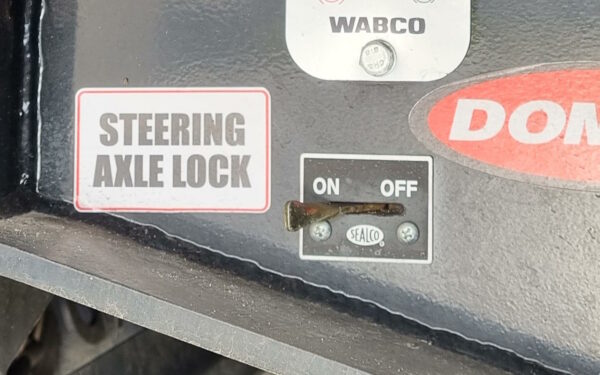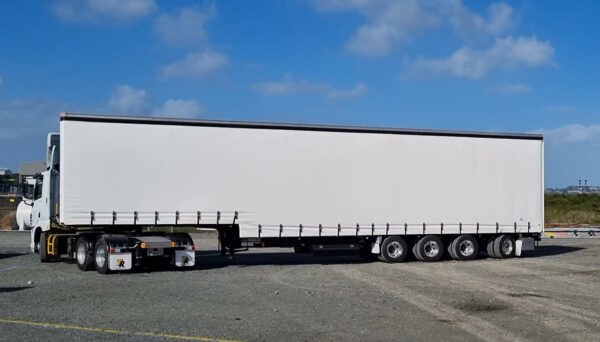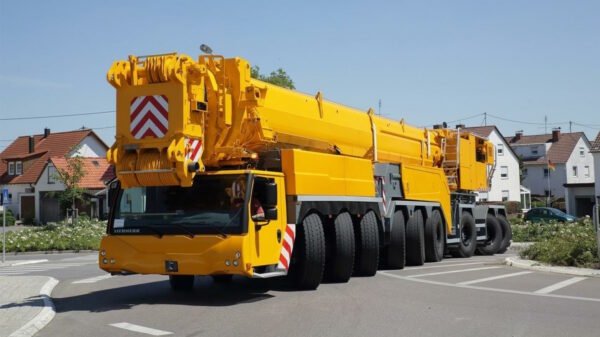A self-steer or rear-steer axle is an axle which passively steers in response to the direction of the vehicle to assist with cornering. This has the advantage of:
- Reducing the cornering radius
- Improving fuel economy through less drag by up to 1%
- Reducing tyre wear by up to 1 tyre per 25,000km.
The wheel can be set with maximum angles approaching 30 degrees.
Self-steer axles are especially useful on long semitrailer where they can be found in tri- and quad-axle configurations.
The axle can be locked in the forward position by the driver switching the lock switch on the side of the vehicle.

What vehicles use self-steer axles?
The types of vehicles that benefit are:
- Longer vehicles that need to be more manoeuvrable
- Vehicles with many axles where tyre wear becomes a problem

The types of vehicles that over (or always) have self-steer axles are:
- Semitrailers (tri- and quad-axle)
- Buses and coaches with three axles
- Rigid trucks with two or three rear axles, e.g. 6×2, 8×4, 10×4
Large mobile cranes (up to 9 axles) often have steering on all or most axles, but they are not self-steer, it is active, speed-dependent steering that can either tighten the turning circle, reduce rear swing, or crab sideways.

Hydraulic module trailers, which are used to transport very heavy and/or very large loads, have independent steering on each axle.
Some cars in the ’80s by Mazda and Honda had four-wheel steer (e.g. Prelude), but this was abandoned due to it being expensive and overly complex in relation to the results it delivered.
